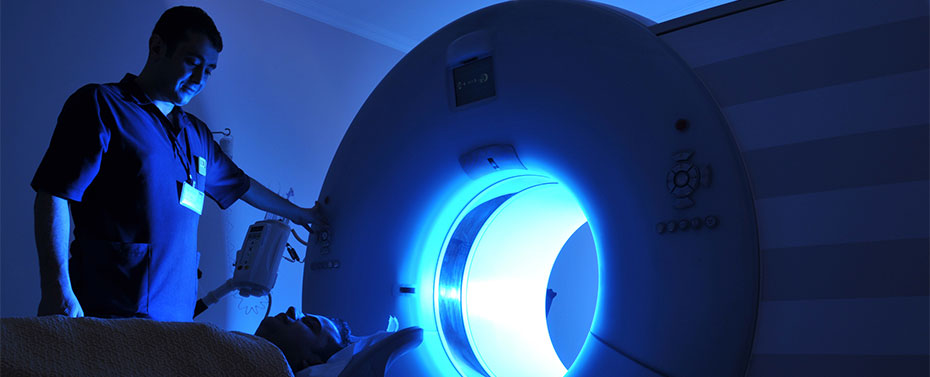Academics and Clinical Training

Curriculum and Calendar
Semester 1
July through December
Clinical Education I
Orientation & Protection
Patient Care & Imaging Modalities
Professional Ethics
Anatomy & Osteology
Medical Terminology
Radiographic Procedures I
Intro. to Equipment Operation
Image Production & Evaluation I
Semester 2
January through June
Clinical Education II
Anatomy & Physiology I
Image Production & Evaluation II
Radiographic Procedures II
Patient Care & Management
Intro. to Disease
Equipment Operation & Maintenance
Semester 3
July through December
Clinical Education III
Radiographic Procedures III
Image Production & Evaluation III
Special Procedures I
Anatomy & Physiology II
Professional Development
Digital Imaging Technology I
Quality Control/Equipment Operation
Semester 4
January through June
Clinical Education IV
Intro. to Venipuncture & EKGs
Radiation Biology
Anatomy & Physiology III
Special Imaging Modalities
Special Procedures II
Digital Imaging Technology II
Radiographic Procedures IV
Registry Exam Preparation
See handbook for credits and hours.
Program Schedule
The program runs for two full years. The program begins the third Monday of July and graduates the third Thursday of June.
School hours: Monday through Friday, 8 a.m. to 4 p.m., subject to change.
Students are provided 14 vacation days per year, as dictated by the school. First year students will be assigned a spring break [3rd Week in April] and second year students will be assigned a winter break [4th Week in December] for which a portion of their allotted vacation time will be applied.
Students are also provided eight holidays:
- New Year’s Day
- President’s Day
- Martin Luther King Jr. Day
- Memorial Day
- Independence Day
- Labor Day
- Thanksgiving Day
- Christmas Day or Hanukkah.
Absenteeism may not exceed 12 days per school year.
Faculty
The faculty includes the following healthcare professionals:
- Program Director, MS, RT (R)
- Clinical Coordinator, BS, RT (R)(M)
- Radiology Administrator
- Radiologist, MD
- Special Technologists in Ultrasound, CT Scanning, Nuclear Medicine, Digital Angiography, Cardiac Catheterization, Magnetic Resonance Imaging, Radiation Oncology, Mammography and Bone Densitometry
- Nursing Staff
- Radiologic Technologists
Grading and Graduation
Failure of Midterm, Final Exam, Course or 3 Tests
If a midterm is failed, the student will not be permitted to continue the program. If a final is failed at the end of the first year, the student will not be permitted to become a senior student. If the final is failed at the end of the senior year, the student will not have met the school’s academic requirements for graduation.
A student must maintain a minimum of 77 percent in all didactic courses during both school years in order to remain in the program. A student may not fail more than two tests per year in all courses in order to remain in the program. Eight (8) quizzes failed in a year is equivalent to one test failure.
Clinical Grading
Students must obtain a minimum grade of 85 percent on the mandated number of clinical competency evaluations. Students may not fail (minimum grade of 85 percent) more than two 3-month overall (affective domain) evaluations throughout the duration of the program. These two grades averaged make up a student’s clinical grade. Infractions of student policies, such as excessive lateness or sick time will result in deductions from a student’s clinical grade.
Graduation
To be eligible for graduation and receive a diploma, students must:
- Successfully complete full attendance requirements.
- Successfully complete academic requirements.
- Maintain an 85 percent or above average for all clinical grading throughout the training.
- Obtain a minimum grade of 85 percent on 6 of the 8 overall (affective domain) evaluations.
- Demonstrate knowledge of and respect for the code of ethics prescribed by the profession.
Technical Standards
Upon completion of appropriate instruction, the student must be able to master the following technical standards:
- Pushing a stretcher and/or wheelchair without injury to self, patient, or others.
- Pushing a portable X–ray tube and manipulate a portable X–ray machine in turning corners, getting the machine on and off an elevator, getting it into a patient’s room, and manipulating it there.
- Manually moving the X–ray machine and manipulate the tube at standard and nonstandard heights and angles up to seven feet.
- Drawing up sterile contrast media and other solutions without contaminating the syringe and/or needle, etc.
- Selecting exposure factors by manipulating dials, buttons, and switches.
- Placing image receptors in Bucky trays and spot film devices and properly manipulate all locks.
- Physically being able to administer emergency care, including CPR.
- Reading patients’ medical charts and/or doctors’ orders.
- Evaluating radiographic images to make certain that radiographs contain proper identification and are of diagnostic value.
